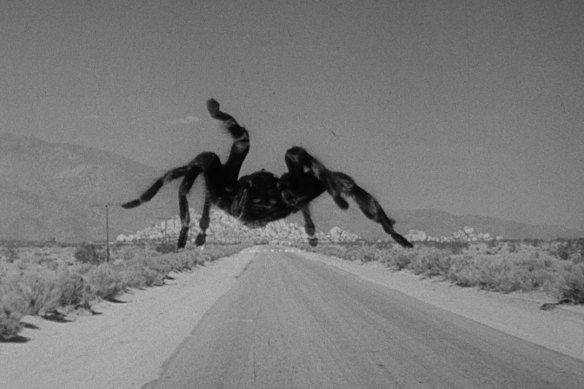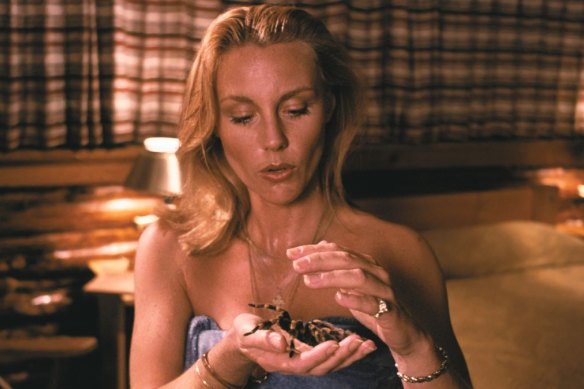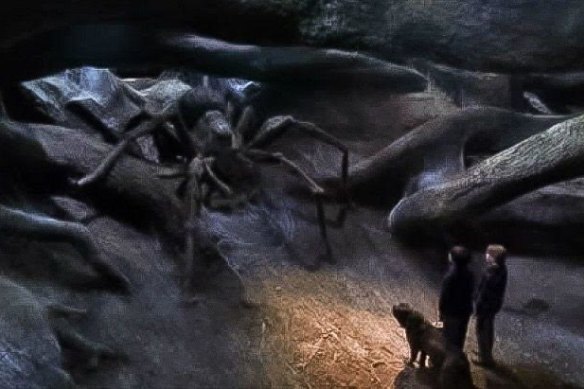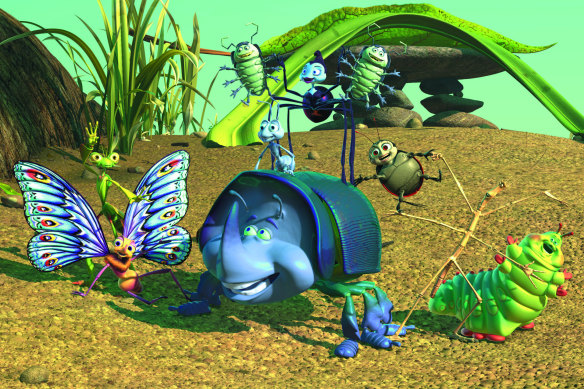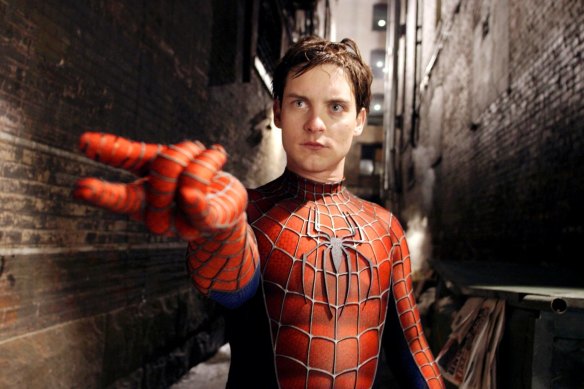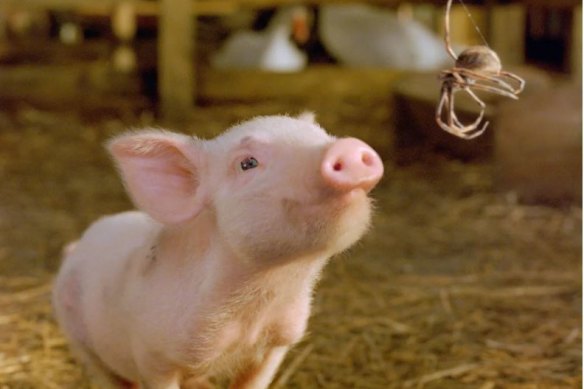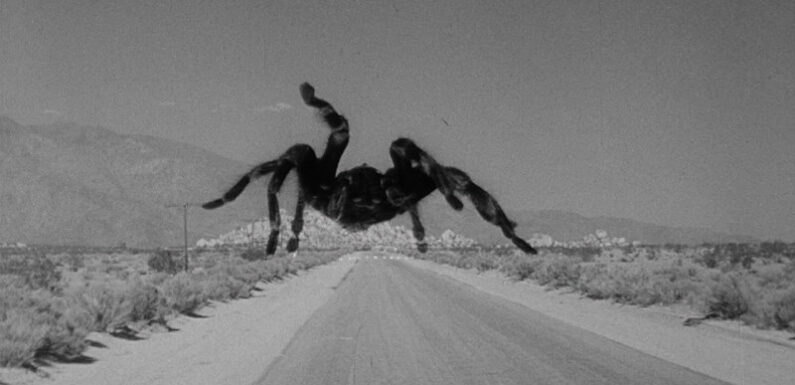
By James O’Hanlon
Save articles for later
Add articles to your saved list and come back to them any time.
The camera pans across a dense jungle canopy. A chorus of screeching birds signals that we are somewhere exotic, remote, and unexplored. The serenity is interrupted by the slash of an enormous machete through a curtain of green vines. Through this verdant stage curtain emerges our hero. His perfectly proportioned face is tastefully adorned with just the right amount of rugged stubble. He wipes his brow with a gloriously tanned arm before gazing stoically at the sprawling jungle ahead. Following behind, with stumbling footsteps, is his trusty local guide. His humble features and short frame contrast with our statuesque hero. The hero turns to speak to his guide but stops when he sees the guide’s face, wide-eyed and trembling with fear.
“S-s-señor,” the guide whimpers. “Do not move a muscle.”
The hero looks confused. What on earth could have evoked such terror in his valiant friend? Slowly, a small black appendage appears over the shoulder of our hero. More legs inch forward revealing a hairy, black tarantula with menacing red stripes.
We’ve all seen this before, or something like it. A movie scene where even the most unflappable of heroes are frozen in fear at the sight of an exotic-looking spider. Usually, it’s followed with some quick exposition about how this spider is the aranha de morte, or something equally dramatic sounding, and that its venom can kill X number of assorted large mammals in a heartbeat.
Tarantula (1955), the start of the tarantula monster trend.
Just in case I need to state the obvious, there is no such spider, these are pure flights of fancy. It does make me ponder why these scenes always seem to feature a tarantula, as opposed to one of the other 50,000 or so species of spiders. Is it because tarantulas are so venomous that we could feasibly believe they are a deadly threat to our heroes? No, quite the opposite.
Tarantulas are a Hollywood favourite because they are rather docile. If you are a moviemaker who wants a cool-looking spider to crawl across the arms of your film’s hero, the safest and most practical way to do this is to employ the services of a harmless tarantula. Species like the Mexican red-kneed tarantulas are a Hollywood favourite as they are easily accustomed to being handled, and if they did bite their venom is pretty benign. Sadly, the tarantula’s stoic nature, and dashing good looks, have destined them to an eternity of movie monster stardom which, to me, seems an unfair burden for these shy and harmless fluffballs.
The tarantula monster phenomenon can be traced back to the era of B-grade black-and-white horror films. Tarantula (1955) tells the story of a giant spider wreaking havoc on a small town in Arizona. The special effects, including footage of live tarantulas superimposed on miniature landscapes, were revolutionary for the time. In 1977, sci-fi megastar William Shatner starred in the cult-classic Kingdom of the Spiders, where another Arizonian small town is overrun by a plague of life-sized tarantulas. The film features numerous scenes where actors’ bodies are covered in live tarantulas. These scenes may only be possible when you can reassure the actors that their spider co-stars are harmless.
Tiffany Bolling as Diane Ashley in Kingdom of the Spiders (1977).
While tarantulas get it the worst, spiders in general get a bad rap when it comes to on-screen portrayals. The horror comedy classic Arachnophobia (1990) starred harmless huntsman spiders native to Australia. Other films feature spider-inspired fantastical beasts like the giant mutants of Eight Legged Freaks (2002), the sinister Shelob from The Lord of the Rings: The Return of the King (2003), and Aragog and her ravenous offspring from Harry Potter and the Chamber of Secrets (2002).
It’s often assumed that spiders make great villains as they tap into deep-rooted fears within our psyche. However, spider fears are not as hard-wired into our minds as we believe. Instead, these monster tropes are built upon some rather shallow myths. Ideas about why spider fears exist often evoke the nature vs. nurture debate – either spider fears are a consequence of evolution and are hardwired into our brains for survival, or they are a tenacious misconception passed on through cultural transmission. The evidence overwhelmingly points to the latter. Overall, spiders are harmless creatures and serious spider bites are rare cases of bad luck. The danger posed by spiders isn’t much different from that posed by other venomous animals, like ants, bees, or scorpions. This hardly accounts for the disproportionate levels of spider-heebie-jeebies floating around society. For those whose spider fears are so significant they are classed as a phobia, treatment is straightforward and effective. Run-of-the-mill exposure therapy, plus some education about spider biology, are quick and powerful means of curing spider phobias.
Our distaste for spiders is more likely based on ideas that have taken hold in society and are reinforced the more they circulate. Where these misconceptions began is unclear. We could point to the portrayals of spiders as tricksters in ancient mythology, such as the spider god Anansi of West African folklore. A myth that spiders were responsible for spreading the black plague century has also been touted as a possible source of widespread spider-disgust in the west. Wherever these myths arose, they have woven their way into our stories, and we continue to perpetuate them with on-screen portrayals of shadowy faceless monsters.
Aragog and her ravenous offspring from Harry Potter and the Chamber of Secrets (2002).
One glaring exception to this rule is Spider-Man and the growing list of Spider-Man universe films. In these films (and the innumerable Spider-Man comics, shows, videogames etc.) spiders are the inspiration for a heroic character rather than a sinister villain. This hero is usually young, naïve, do-gooding, and an all-round likeable underdog. But beyond references to silk and wall-walking, spiders don’t have much to do with the Spider-Man mythology other than some web-themed costume designs and obligatory close-up shots of radioactive spider bites.
Films that feature spiders as righteous characters are relatively rare. The Netflix animated film Back to the Outback (2021) features an ensemble of animals voiced by a slew of Aussie celebrities. Guy Pearce voices a lovelorn funnel-web spider called Frank who, along with his companions, is on a mission to shake off his fearful stereotype. In a similar vein, The Bad Guys (2022) features Ms. Tarantula, a clever computer hacker amongst an ensemble of misunderstood animal characters.
Perhaps the most famous spider character in film comes from adaptations of the children’s book Charlotte’s Web (1952). In both the 1973 animated version and the 2006 live-action film, the titular character Charlotte is a kind and creative orb-web spider that saves the life of a pig destined for slaughter. Similarly, A Bug’s Life (1998) and James and the Giant Peach (1996), both feature black widow spiders as kind maternal figures. Beyond these few examples, finding positive spider portrayals in film starts to become a treasure hunt for obscure cameos and one-liners. Does anyone remember Nails the street-smart spider from 1992’s Cool World? Nope? Me neither.
A Bug’s Life (1998) features a black widow spider as a kind maternal figures.
On one hand, spider movie monsters are all a bit of harmless fun. I’m partial to B-grade monster movies myself. But on the other hand, I think relying too heavily on spiders as horror tropes is a lost opportunity and, frankly, a bit dull. Spiders are fascinating creatures, and once you peel back the veil of negative stereotypes, their complex natural history reveals a much richer trove of inspiration for storytelling. Their silk is a biomechanical wonder; it is weight-for-weight stronger than steel and more energy absorbent than bullet-proof Kevlar. Even Spider-Man’s super-silk isn’t too farfetched from reality. A team of bioengineers from the USA estimated the thickness of Spider-Man’s silk threads from film footage and calculated that they could, hypothetically, hold the weight of a full-grown adult. Even the famous scene from Spider-Man 2 (2004), where Tobey Maguire stops a runaway train by anchoring lines of silk to nearby buildings and holding on for dear life, is theoretically possible. If you could create that many silk threads of that thickness then, yes, they could stop a moving train. Whether Maguire’s grip strength could hold them together is another matter entirely.
The maternal spider figures of films like Charlotte’s Web are reminiscent of real-world spider mothers. Wolf spiders are famous for carrying entire clutches of babies around on their backs until they have grown enough to fend for themselves. Other spider mothers will provide food for their babies, with some making the ultimate sacrifice of offering up their bodies as a meal for their cannibalistic offspring.
Tobey Maguire as Spider-Man.Credit: Sony
Many other intriguing spider stories have yet to be celebrated on the big screen but are ready and waiting for their film debut. The technicolour courtship dances of Australian peacock spiders regularly feature in online viral videos but have yet to become Hollywood stars. Portia jumping spiders are famous for their intelligence, and they hunt other spiders by sneakily lowering themselves down on a silk thread from above, a la Tom Cruise in Mission: Impossible (1996).
The history of spiders and human society provides a ready supply of stories to be told as historical fiction. May I interest you in a film about the Jesuit priest sent to colonial Madagascar with a mission to revolutionise the French textiles industry by building a spider silk harvesting factory? How about the true story of the American entrepreneurs who genetically engineered spider-goats to harvest silk proteins from goats’ milk? Or the tale of the plucky Australian school kids who supplied spiders to NASA, only to later watch their precious school experiment disintegrate on re-entry along with the crew of the Columbia space shuttle in 2003.
If we ponder the possibilities of speculative fiction and alternative history, the abandoned plans of the French Military Balloon School in the early 1900s to make hot air balloons from spider silk would make for a rollicking steampunk adventure. Or perhaps an off-beat comedy asking what-if the biotech company behind spider-goats hadn’t filed for bankruptcy a few years after their creation.
The 2006 remake of Charlotte’s Web.
We needn’t abandon familiar cinematic tropes, and spooky spider films will continue to be made. The Australian film Sting, for example, is currently in post-production and is eagerly being touted as the next big thing in monster horror movies. However, with the psychological tethers holding us to our spider fears so thin, and the facts about spiders being so much more interesting than fiction, I wonder whether spooky spider tropes will soon wear thin. If we want to keep making spiders into movie monsters, then we must lean precariously heavily on the “fiction” side of sci-fi. But if we turn our sights to the fascinating truths of what spiders are, then we open ourselves to whole new worlds of inspiration for original and incredible stories.
Find out the next TV, streaming series and movies to add to your must-sees. Get The Watchlist delivered every Thursday.
To read more from Spectrum, visit our page here.
Most Viewed in Culture
Source: Read Full Article
